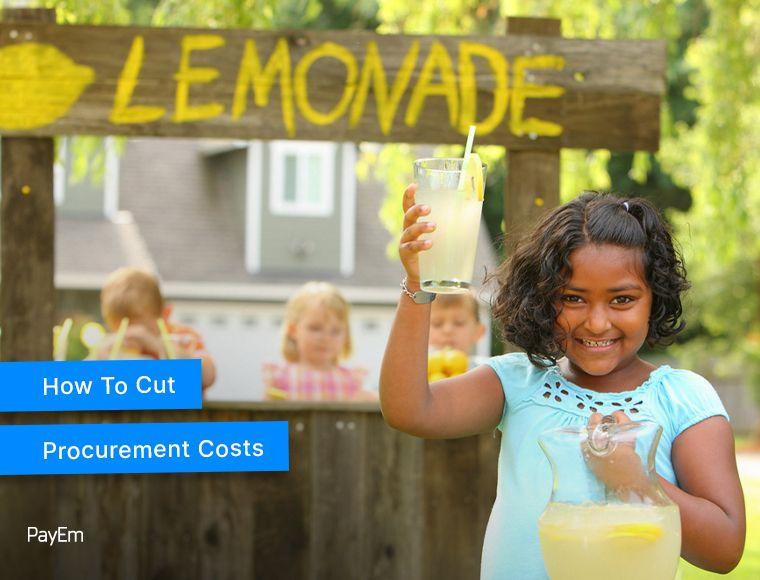
Sign up for our newsletter
Stay informed with the latest trends and best practices in finance and procurement.

The procurement process is inherently multifaceted and involves the acquisition of many different types of goods and services, both direct and indirect. As an organization moves through each phase of the procurement process, it is imperative to explore which costs are necessary and which could be optimized for greater savings, on both sides of the procurement spectrum. Developing an effective cost-saving strategy for the procurement life cycle will ultimately create a more robust financial profile while increasing profitability.
This article will cover procurement cost reduction:
- The costs associated with procurement
- Common procurement costs
- The necessity of procurement cost reduction
- Short and long term cost reduction strategies
- How a business can identify the best cost reduction strategies
What costs are associated with procurement?
There are many different costs associated with the indirect procurement process of an organization, whether it be outsourcing, consulting, marketing costs, or SaaS subscriptions. Getting a handle on the exact costs within the procurement process can aid in developing the most effective cost-saving initiatives.
Common Procurement Strategies Include:
- Reducing Unaccounted Spend
- Streamlining Purchases
- Consolidating Suppliers
- Implementing Automation Procedures
Why is procurement cost reduction necessary?
A procurement cost reduction strategy is a necessary part of operating a business. As the procurement process is one of the primary ways that companies spend money, it is essential to audit spending in this area to ensure that costs are within the pre-established budget. By reducing costs in the procurement system, a business can increase its profit margins and enjoy more financial stability.
One of the areas to consider when performing a cost-saving analysis of the procurement process is value leakage. Contract value leakage refers to the situation that occurs when the expected value of a contract exceeds the value realized during its lifetime. This can happen when there isn’t a dedicated plan in place for vendor management.
What are some effective procurement cost-saving strategies?
Having a strategic approach to procurement savings can help reduce inefficiencies in the procurement system. Implementing procurement cost-saving strategies will lower costs and reduce, if not eliminate, unneeded expenses that may have been previously overlooked.
1. Plan Ahead for Supplier Onboarding
A common approach when exploring cost-saving opportunities in procurement is to examine ways to save with existing suppliers. Although this is valid and necessary, planning ahead before onboarding new suppliers can be paramount to success in cost-saving. It helps to begin by exploring past contractural agreements with previous suppliers and learning what worked and what didn’t. Finding out what caused contract non-compliance to occur can help to inform future supplier onboarding processes. Additionally, a business can explore what discounts prospective suppliers may be able to offer and have these written into the contract as a preemptive cost-saving approach.
2. Negotiate Existing Contracts
Contracts should be revisited often and adjusted to accommodate changes in the market as well as internal needs. This ensures that an organization continues to get the best deal possible. Market research should be conducted to support contractual changes that may need to be adjusted, such as pricing or overall need.
3. Eliminate Maverick Spending
Maverick spending refers to spending outside of pre-established company guidelines and contracts. When spending does not follow a defined procurement process, it can cost a business more in the long run. This is because these purchases won’t receive any established supplier discounts. Maverick spending can cause a company to quickly exceed its allotted budget in a specific category. To offset this risk, it’s helpful to ensure that all purchases go through a specific chain of command. This can be accomplished using technology, such as procurement management software, for all purchases.
4. Employ Effective Data Collection Practices
Accurate data collection can assist with procurement forecasting, which will help the business to obtain the best prices for services and goods. With specific data, a company can gain greater insight into their spending, which will reduce unneeded expenditures for more significant cost savings.
5. Automate The Procurement Process
A manual procurement process can end up being very costly for a business. This is because there are labor costs associated with processing invoices, whereas automatic invoicing has a much smaller associated cost. In addition, there is less room for error which equates to fewer costly mistakes to fix during the procurement process.
Additional Procurement Cost Reduction Strategies Include:
- Providing self-service portals for vendors
- Checking quality to reduce losses
- Requesting supplier discounts, where possible
- Explore additional outsourcing options
How can businesses identify the best procurement cost reduction strategies?
Procurement cost reduction isn’t a one size fits all process as not every strategy will be a fit for every business. As such, it is essential to learn how a company can identify the best procurement cost reduction strategies to ensure the most cost savings. The first step in identifying the most suitable cost reduction strategies involves looking at the data to see where any value leakages occur. Viewing existing data and exploring cost drivers is instrumental in finding areas where savings can occur.
One of the premier ways to enhance procurement spend management and view procurement data is by using automated procurement software. One of the most robust and fully featured procurement software platforms is PayEm. With PayEm, you can take your business further by using a platform that offers real-time visibility, analysis, and insight into your complete procurement process. PayEm fully empowers companies with the data needed to make the best cost-saving decisions for your procurement process. Contact PayEm’s experts to book a commitment-free, no-cost demo of the platform today.


